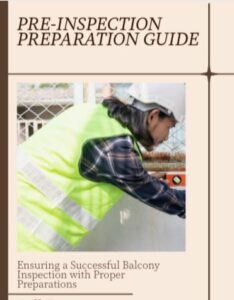Balcony inspections are essential for ensuring the safety and longevity of these structures. Whether you’re a property owner, a manager, or a resident, understanding the inspection process can help you maintain your balcony in excellent condition and avoid potential hazards. In this comprehensive guide, we will walk you through the step-by-step procedure of a balcony inspection, highlighting key aspects that professionals focus on to ensure your balcony remains safe and secure.
Understanding the Importance of Balcony Inspections
Balconies, while providing aesthetic appeal and additional space, are subject to various stresses that can lead to deterioration over time. Regular inspections are crucial to identify and mitigate potential risks such as structural weaknesses, water damage, and material degradation. Ensuring a balcony’s safety protects the occupants and enhances the property’s overall value.
Pre-Inspection Preparation
Before the actual inspection begins, some preparatory steps are necessary. These include:

Reviewing Building Plans and Previous Reports
Inspectors of construction inspection company often start by examining the original building plans and any previous inspection reports to understand the balcony’s design, materials used, and historical issues. This historical perspective provides insight into recurring problems and areas that may need special attention during the current inspection.
Scheduling the Inspection
Coordination with residents or property managers to ensure access to the balcony during the inspection is essential. Effective scheduling minimizes disruption and ensures that the inspection can proceed smoothly without interruptions.
Gathering Tools and Equipment
Inspectors prepare the necessary tools such as moisture meters, flashlights, inspection mirrors, and safety gear. Ensuring that all equipment is in working order and ready to use helps conduct a thorough and efficient inspection.
Visual Examination
The visual examination is the first step in a balcony inspection. It involves a thorough look at the balcony to identify any obvious signs of damage or wear. Key areas inspected include:
Surface Condition
Inspectors check the condition of the balcony surface for cracks, spalling, or discoloration, which can indicate underlying problems. They also look for signs of water pooling, which can lead to structural damage. A well-maintained surface is crucial for both safety and aesthetics.
Structural Elements
The structural components such as beams, columns, and slabs are scrutinized for any signs of distress. Rust stains, concrete cracks, and exposed rebar are critical indicators of structural integrity issues. Ensuring the structural elements are sound is vital for the balcony’s overall stability.
Railings and Balustrades
Inspectors ensure that railings and balustrades are secure and meet safety standards. Loose or corroded railings can pose significant safety hazards. The height, spacing, and strength of these elements are checked to comply with local building codes.
Detailed Component Inspection
Beyond the initial visual examination, inspectors delve deeper into the specific components of the balcony.
Waterproofing and Drainage Systems
Waterproofing is vital for preventing water infiltration that can weaken the structure. Inspectors test the efficacy of the waterproofing membrane and check for proper drainage systems to avoid water accumulation. This includes examining sealants and flashings around edges and penetrations.
Connections and Fasteners
The connections and fasteners that hold the balcony together are inspected for signs of corrosion, loosening, or failure. This includes checking bolts, screws, and welding joints. Strong, intact connections are essential for the balcony’s stability and load-bearing capacity.
Material Condition
The materials used in the construction of the balcony, such as concrete, wood, or metal, are assessed for signs of degradation. Concrete may show cracks or spalling, wood could have rot or insect damage, and metal might exhibit rust or corrosion. Each material type requires specific maintenance and repair strategies.
Functional Testing
Functional testing ensures that all components of the balcony work as intended. This includes:
Load Testing
Load testing may be conducted to ensure the balcony can safely support the expected weight. This involves applying pressure to the structure and measuring its response. Load testing is especially important for older balconies or those undergoing significant wear.
Moisture Testing
During Concrete Testing using moisture meters, inspectors check for hidden water damage within the balcony structure. Excessive moisture can lead to mold growth and material deterioration. Identifying moisture issues early can prevent costly repairs and health hazards.
Documentation and Reporting
After the inspection, a detailed report is prepared. This report includes:
Findings and Observations
A comprehensive list of all findings, including photographs and descriptions of any issues found during the inspection. Clear documentation helps property owners understand the current state of the balcony and prioritize necessary repairs.
Recommendations for Repairs
Suggestions for necessary repairs or maintenance actions to address the identified issues. This may include recommendations for professional contractors or specific repair techniques. Providing detailed, actionable recommendations ensures that the property owner can take immediate steps to maintain the balcony’s safety and functionality.
Safety Evaluations
An assessment of the overall safety of the balcony, highlighting any immediate hazards that need to be addressed. Safety evaluations are crucial for preventing accidents and ensuring the well-being of the balcony’s occupants.
Common Issues Found During Balcony Inspections
While each balcony is unique, some common issues frequently encountered during inspections include:

Water Damage and Leaks
Often due to inadequate waterproofing or drainage, leading to structural weakening. Water damage is one of the most common and destructive issues, requiring prompt attention to prevent long-term damage.
Corrosion of Metal Components
Especially in coastal areas where saltwater can accelerate rusting. Corrosion not only weakens the structural integrity but also can lead to safety hazards if left unaddressed.
Cracks and Spalling in Concrete
Indicating potential structural problems that need immediate attention. Cracks can allow water infiltration, exacerbating the damage and potentially leading to more extensive repairs.
Loose or Damaged Railings
Posing significant safety risks for residents. Railings are critical for preventing falls, and any issues must be repaired promptly to ensure safety.
Rotting Wood
Common in wooden balconies, requiring timely repairs to prevent collapse. Wood rot can be caused by moisture, insects, or fungal growth, and addressing it early can save significant repair costs.
Maintaining Your Balcony Post-Inspection
Once the inspection is complete and any necessary repairs are made, ongoing maintenance is crucial to prolong the life of the balcony. Key maintenance practices include:
Regular Cleaning
Keeping the balcony clean and free of debris to prevent water accumulation and material degradation. Regular cleaning can also help identify new issues early, allowing for prompt repairs.
Periodic Inspections
Scheduling regular inspections to catch any new issues early. Even if no immediate problems are found, periodic inspections help ensure that the balcony remains in good condition over time.
Prompt Repairs
Addressing any minor issues promptly to prevent them from becoming major problems. Proactive maintenance can save time, money, and potential safety hazards in the long run.
Conclusion
Balcony inspections are an essential aspect of property maintenance, ensuring the safety and durability of these structures. By understanding the inspection process, property owners and managers can take proactive steps to maintain their balconies in excellent condition. Regular inspections, coupled with timely repairs and maintenance, not only enhance safety but also protect the value of the property.
FAQs:
How long does a balcony inspection usually take?
The time varies depending on the size and complexity of the balcony, but it usually takes between 30 minutes to an hour.
What documents will I need for the inspection?
You may need to provide the inspector with building plans, previous inspection reports, and any relevant permits.
What are the common signs that my balcony needs an inspection?
Noticeable cracks in the concrete, loose railings, rusting metal components, water damage, visible movement or swaying, and any other noticeable structural issues.
How much does a balcony inspection cost?
Prices vary based on factors such as the size of the balcony, location, and complexity of the inspection. Contact local professionals for accurate quotes.
What happens if my balcony fails the inspection?
The inspector will provide a report outlining the issues and recommend necessary repairs. You'll need to hire a qualified contractor to address the problems.






